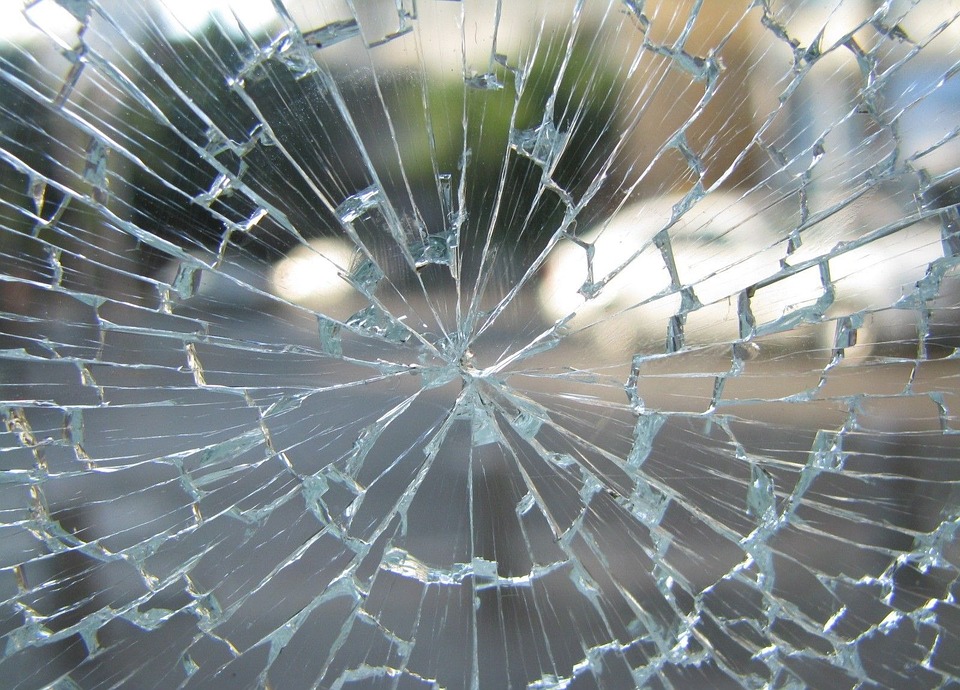
One of the oldest and most common safety features on cars is the shatter-resistant glass that is mandatory on cars made and sold in the United States. The reason laminated glass is mandatory, at least for the windshield, is because it keeps the glass from shattering into dangerous sharp pieces. Instead, it typically confines the broken glass to the windshield shattered by in tact. In earlie cars, the shards of glass from broken windshields could shatter into the occupants leading to dangerous and deadly cuts. With shatter-resistant glass, the glass has been laminated in a way that allows it to stay attached, thus preventing injuries, by preventing small shards of broken glass from entering the cabin as projectiles.
When Laminated Safety Glass Became a Standard
As noted, shatter-resistant glass is one of the first safety features offered on cars. It was first offered as standard equipment in 1936. From that year throughout the 1940s and 1950s, US manufacturers included laminated safety glass on every window except the rear window. Then, beginning with the late 1950s and early 1960s, manufacturers went searching for cheaper glass to use in the passenger windows and settled on tempered glass as a replacement. They did make adjustments so that the tempered glass could pass safety tests, but carmakers still decided to put their profits ahead of safety with this move. According to safety experts, the savings are less than $3 per window.
As a result of that decision, every year, between 700 and 1,000 people will suffer serious injuries as a result of being partially ejected from a motor vehicle during an accident. And according to many safety experts, a passenger who is ejected from a car during an accident is ten times more likely to die from their injuries.
Putting Profits First
The difference between laminated and tempered safety glass is that laminated glass is made by bonding a layer of glass with resin, while tempered glass is essentially like regular glass, but adding materials to make the glass itself tougher. The tempering process makes the glass much stronger than laminated glass, but during an accident, it is much more likely to shatter into thousands of tiny, sharp pieces. Of course, its use in only the windshield means thieves are more likely to break a passenger side window when they break-in.
According to a number of studies, the use of laminated safety glass greatly reduces the risk of ejection in an accident, for passengers wearing and not wearing seatbelts. That is because the lamination in the windshield means the glass is more likely to stay in place, thus providing a barrier to prevent ejection. That is why all vehicles sold in the United States must use laminated safety glass in the windshield, even though they are not required to use it for any other window.
There has been a lot of research and development over the past couple of decades, in a bid to make door latches better, to prevent them from opening during an accident, thus reducing the likelihood of ejection during a crash. Obviously, an open door increases the risk of partial or total ejection even for belted occupants. However, several studies from the 1980s suggest that fixing door problems only reduced fatalities cause by ejections from 27% to 22%. Even when seatbelts are used in cars with designs that keep the doors closed in accidents, partial ejection through car window openings occurs more frequently.
Shattering the Myth That Tempered Safety Glass is “Safe Enough.”
The fact of the matter is, while tempered glass is safer than regular glass, it still shatters into thousands of pieces when it is broken, either on purpose or in an accident. And because tempered glass breaks upon contact or whenever the car’s roof collapses, tempered glass is seen by many safety experts as a less effective barrier to ejection in side collisions and rollover accidents thsn laminated safety glass. One reason for that is that the physical properties of rollover accidents have a tendency to force the head, upper torso and arms of any passenger, including those wearing seatbelts, out of the protected passenger area.
When you consider that nearly 36,000 vehicle occupants arc ejected every year (80 percent totally and 20 percent partially), the problem is obvious. Despite the improvements in door latch technology, it is clear that laminated windshields still serve as a barrier to ejection, but the side passenger windows largely do not. Most of the ejections that occur happen through the front door and windows.
A few car makers now admit that tempered glass offers no safety benefits and that laminated safety glass significantly reduces the risk and occurrence of ejection. The use of laminated safety glass in passenger windows, coupled with a properly reinforced roof, reduce the risk of partial ejection to almost zero, and full ejecion in only the most violent crashes.
Why We Should Hold Car Makers Accountable
Again, the fact is that car manufacturers have known this for a long time, but they still use tempered glass on side windows, at a minimal cost saving. Back in 1980, the National Highway Traffic Safety Administration (NHTSA) recommended that manufacturers use laminated glass on side windows as a way to keep occupants inside the vehicles during a crash, especially during side-impact and rollover accidents, but the manufacturers refused to adopt the change due to the cost. The same happened in 1992 when the NHTSA repeated the same recommendation.
So far, BMW is the only car manufacturer to offer laminated safety glass in all of its vehicle windows, and even they only offer it as an option that consumers have to pay for.
When we say that some car manufacturers put their profits ahead of safety, it is not hyperbole. It happens in many ways, including their bid to save less than $3 per window.
